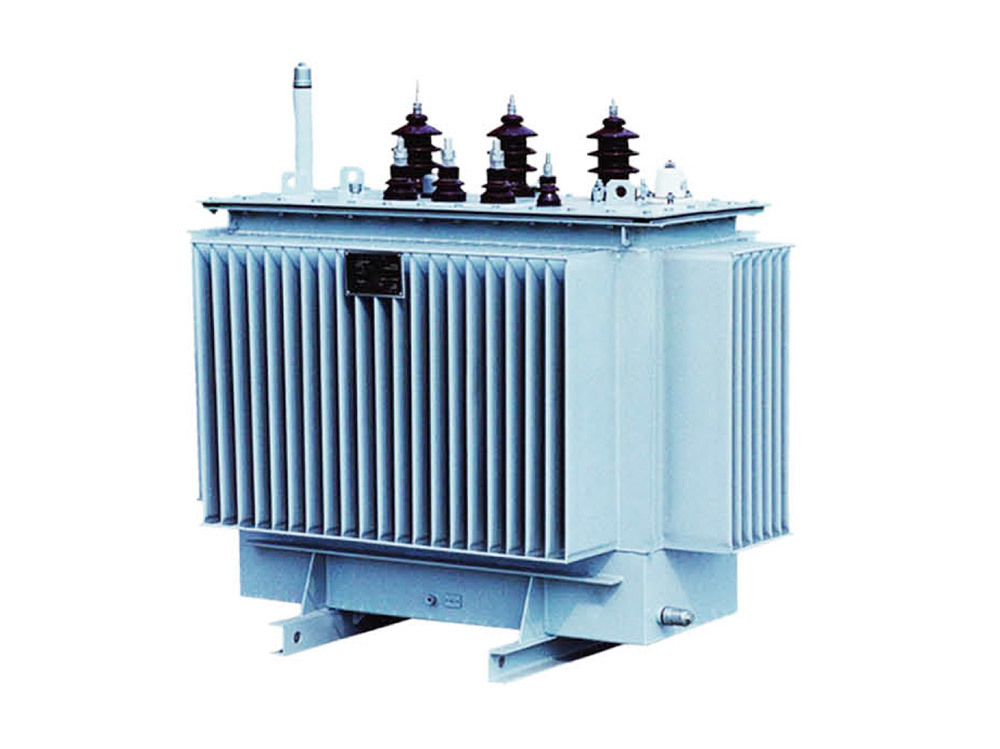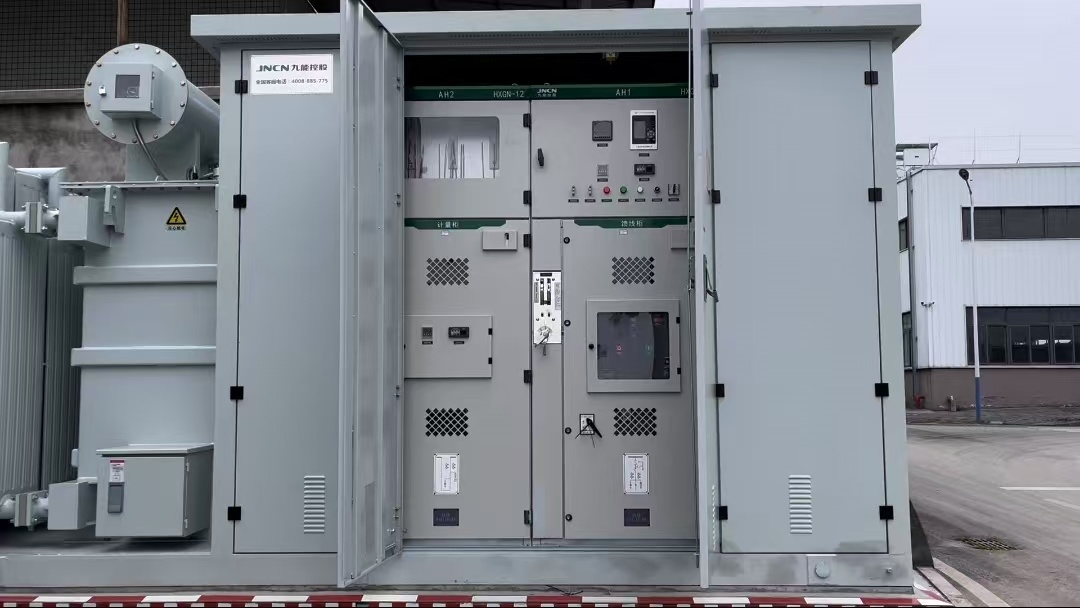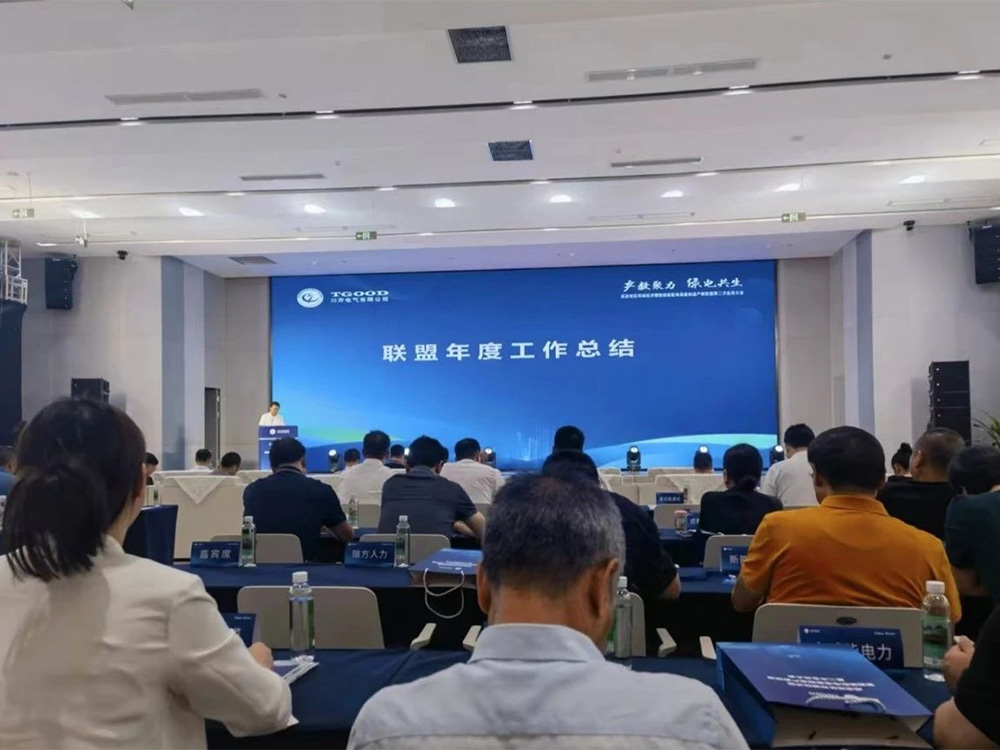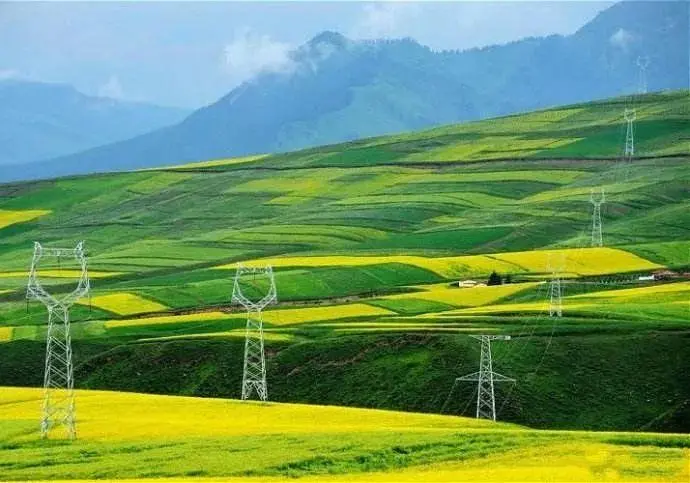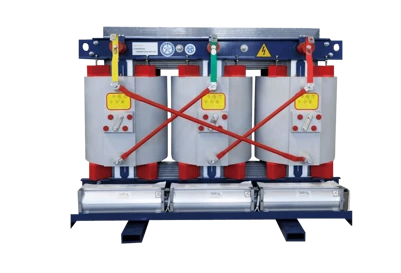Action Plan for Industrial Energy Conservation and Green Standardization (2017-2019)
In order to implement the "Made in China 2025", promote the implementation of the "Industrial Green Development Plan (2016-2020)" and the "Industrial Green Manufacturing Project Implementation Guide (2016-2020)", give full play to the norms and guidance of industrial energy conservation and green standards, and promote the energy efficiency improvement and green development of industrial enterprises, this action plan is formulated in accordance with the spirit of the Notice of the State Council on Printing and Distributing the Reform Plan for Deepening Standardization Work (No. 13 [2015] of the State Council) and the Opinions of the General Office of the State Council on Strengthening Energy Conservation Standardization Work (No. 16 [2015] of the State Council).
1
Necessity of Strengthening Industrial Energy Conservation and Green Standardization
Industrial energy conservation and green standards are an important basis for regulating the energy-using behavior of industrial enterprises and promoting industrial energy conservation and green development. In recent years, the Ministry of Industry and Information Technology, together with the General Administration of Quality Supervision, Inspection and Quarantine and other departments, has promoted and issued the "Guidelines for the Construction of Green Manufacturing Standard System" (Ministry of Industry and Information Technology Joint Section [2016] No. 304) and the "Equipment Manufacturing Industry Standardization and Quality Improvement Plan" (National Quality Supervision and Inspection Standards Union [2016] No. 396), combining the needs of industrial energy conservation and green development, issued the "Industrial and Communications Industry Energy Conservation and Comprehensive Utilization of the Field of Technical Standards System" (Department of Industry and Information Technology Section [2014] No. 149), and continue to increase the standard formulation, publicity and supervision and inspection efforts. In terms of standard formulation and revision, more than 400 standards for energy consumption per unit product, product energy efficiency, water efficiency, and utilization of renewable resources have been formulated and revised, initially forming the basis for industrial energy conservation and green standards. In terms of supervision of the implementation of standards, by strengthening the publicity and implementation of standards, implementing mandatory energy consumption limits and product energy efficiency standards, promoting enterprises to eliminate inefficient equipment, adopting high-efficiency energy-saving and water-saving technology products, carrying out energy efficiency benchmarking activities in key energy-using industries, establishing water-saving benchmarking enterprises, standardizing the utilization of renewable resources, and continuously improving the level of industrial energy efficiency and green development. On the basis of the standard publicity and implementation work, by increasing the supervision of industrial energy conservation, strengthening the supervision during and after the event, supporting the implementation of major policies such as eliminating backwardness and resolving excess capacity; through the implementation of a tiered electricity price policy based on energy consumption quota standards, enterprises are forced to save energy and reduce consumption, reduce costs and increase efficiency, and create a fair competitive market environment. The development of these tasks has effectively promoted the energy efficiency improvement and green transformation of industrial enterprises, and has made important contributions to exceeding the "Twelfth Five-Year" industrial energy conservation goals and tasks.
Although industrial energy conservation and green standardization work has achieved certain results, there are still problems such as insufficient standard coverage, untimely update, disconnection between formulation and implementation, and imperfect implementation mechanism. The "13th Five-Year Plan" period is a critical period for implementing the strategy of manufacturing power, and it is also a crucial stage for promoting industrial energy conservation and green development. The standardization reform of the State Council also puts forward higher requirements for industrial energy conservation and green standardization. In order to better implement the concept of green development, comprehensively promote green manufacturing, improve the work system of industrial energy conservation and green standardization, do a good job in standardization work in the next few years, and give full play to the supporting and leading role of standardization in industrial energy conservation and green development, it is decided to implement the action plan of industrial energy conservation and green standardization.
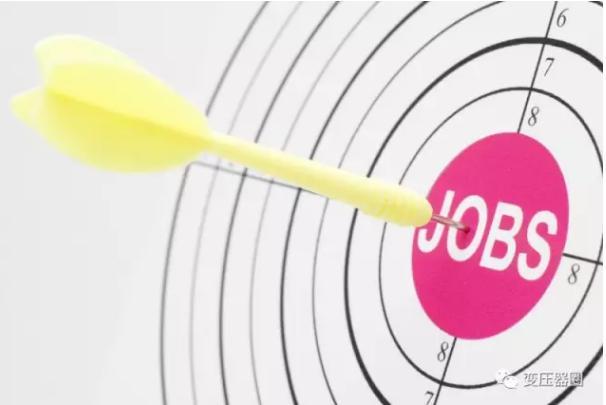
2
General requirements and work objectives
(I) and general requirements
Fully implement the new development concept, implement the Made in China 2025, accelerate the promotion of green manufacturing, closely focus on the needs of industrial energy conservation and green development, and in accordance with the requirements of the State Council's standardization work reform, give full play to the role of industry authorities in standard formulation, implementation and supervision, Strengthen the revision of industrial energy conservation and green standards, expand the coverage of standards, increase standard implementation supervision and capacity building, and improve the industrial energy conservation and green standardization work system, give full play to the supporting and leading role of standards in industrial energy conservation and green development.
Adhere to the problem orientation. In accordance with the planning and requirements of industrial green transformation and development, in view of the new problems faced by industrial energy conservation and green development, focus on key work, speed up the formulation, implementation and supervision of relevant standards for energy consumption and water consumption per unit product, product energy efficiency and water efficiency, operation testing, supervision and management, and green manufacturing.
Adhere to the overall promotion. Strengthen the top-level design, on the basis of coordinating the needs of various standards, coordinate the promotion of national standards, industry standards, local standards, group standards and corporate standards, and build an industrial energy-saving and green standard system with clear positioning and reasonable division of labor.
Adhere to the coordinated implementation. Implement the main responsibility for the formulation, implementation and supervision of industrial energy conservation and green standards, give full play to the enthusiasm of industry authorities, energy conservation supervision agencies, industry associations, social organizations, third-party institutions, and key enterprises, and form a joint force to jointly promote industrial energy conservation and green Standardization work.
(II), work objectives
By 2020, 300 key standards will be formulated and revised in the fields of energy consumption and water consumption limit per unit product, energy efficiency and water efficiency of products, energy and water saving evaluation, utilization of renewable resources, green manufacturing, etc., and basically establish an industrial energy conservation and green standard system; strengthen standard implementation Supervision, improve energy conservation supervision, benchmarking, and tiered electricity price policies; strengthen basic capacity building, and organize industrial energy conservation management personnel and energy conservation supervisors to implement standard training 2000 times; cultivate a number of energy-saving and green standardization support institutions and evaluation institutions.
3
Key Tasks
(I), strengthen industrial energy conservation and green standard revision
1. Formulate a batch of industrial energy conservation and green standards. In view of the new situation and new tasks of industrial energy conservation and green development and the construction of green manufacturing system, we should speed up the formulation of a number of industrial energy conservation and green development standards. The first is to focus on formulating a batch of energy-saving and water-saving design, energy consumption calculation, operation testing, energy-saving evaluation, energy efficiency water efficiency evaluation, energy-saving supervision specifications, and renewable resource utilization standards in the steel, building materials, non-ferrous metals, machinery and other industries to support energy efficiency implementation Standards, energy conservation monitoring, energy auditing, etc. The second is to formulate a number of energy-saving and green technical specifications and standards in the fields of energy efficiency and water efficiency of end-use energy products, industrial energy-saving and water-saving design and optimization, distributed energy, waste heat and pressure recovery, and green data centers, so as to promote the promotion and application of new technologies and new products in the field of energy-saving and green manufacturing. The third is to speed up the formulation of green factories, green parks, green products, green supply chain standards, and guide the construction of green manufacturing systems.
2. Revise and update a batch of industrial energy saving and green standards. In view of the problems such as the standard age of some key industries and key energy-using equipment exceeding three years, failing to reflect the progress of technology and energy efficiency, and failing to adapt to the new requirements of industrial green development, the review cycle is shortened, and a number of industrial energy-saving and green standards are revised and updated at an accelerated pace. The first is to sort out the energy consumption quota standards per unit product in key industries such as steel, building materials, petrochemicals, non-ferrous metals and light industry, and promote the revision of the standard system by classification, so as to achieve full coverage and rolling update of the energy consumption quota standards for high energy-consuming industries. and study the inclusion of the "leader" index into the energy consumption standard. The second is to strengthen the formulation and revision of energy efficiency standards for products and equipment in the steel, machinery, electronics, non-ferrous metals, light industry, aerospace and other industries to ensure that the standard indicators are advanced and play a guiding and restrictive role in energy-using equipment. The third is to improve the energy-saving management standard system, accelerate the formulation and revision of energy management standards for key industries, and promote industrial enterprises to strengthen energy-saving management.
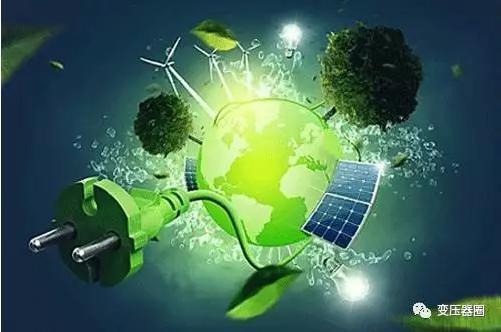
(II) and Strengthening the Implementation of Industrial Energy Conservation and Green Standards
1. Strengthen the implementation of mandatory energy-saving standards. We will implement mandatory energy consumption limits and product energy efficiency standards, standardize the energy consumption behavior of industrial enterprises in accordance with the law, strengthen the supervision of industrial energy conservation, urge key enterprises to implement mandatory energy conservation standards, implement the energy measurement and statistics system, eliminate backward processes and energy-using equipment products, and constantly improve energy utilization efficiency. Through the implementation of tiered electricity price policies based on energy consumption quota standards in steel, cement, electrolytic aluminum and other industries, we will improve the linkage mechanism between industrial energy consumption verification and price policy implementation, and use price means to promote industrial enterprises to improve energy efficiency and reduce costs and increase efficiency.
2, to carry out industrial enterprises energy efficiency level benchmarking activities. In line with advanced enterprises and advanced levels, we will promote the implementation of energy-saving technological transformation, focus on energy efficiency and water efficiency benchmarking activities in iron and steel, petroleum and chemical industry, building materials, non-ferrous metals and other industries, implement the "leader" system of energy efficiency and water efficiency, select and publish the list of energy efficiency benchmarking enterprises and energy efficiency indicators, and issue guidelines for best practices in energy efficiency, so as to promote industrial enterprises to catch up with the advanced industries and improve the overall energy efficiency level. Continue to select and publish energy-saving mechanical and electrical equipment product recommend catalog and "energy efficiency star" product catalog, and promote industrial enterprises to adopt energy-efficient equipment products.
(III) and improve the basic ability of industrial energy saving and green standards
1. Build a standardized work platform. Industrial energy conservation and green standardization work involves a wide range of subjects, and needs to strengthen communication and coordination. The Ministry of Industry and Information Technology will participate with relevant departments, as well as local industry authorities, energy-saving supervision agencies, industry associations, social organizations and key enterprises, to build a working platform, strengthen work communication and coordination, summarize standard formulation and implementation experience, and carry out local standard exchanges, Coordinate and promote industrial energy conservation and green standardization.
2. Strengthen standard publicity and implementation training. Enhancing the awareness and ability of the competent departments of industry and information technology, energy-saving supervision institutions and key enterprises is the key to the implementation of energy-saving and green standards. Combining the update of energy conservation and green standards, focusing on the steel, petrochemical, building materials, non-ferrous metals, light industry, textiles, electronics and other industries, give full play to the role of local energy conservation supervision agencies, through the preparation of training materials, on-site training, and the construction of online training platforms And other means to strengthen the training of energy conservation and green standards for energy conservation managers, energy conservation supervisors, and enterprise energy management leaders.
3, cultivate standardized support institutions and evaluation institutions. Giving full play to the role of market players and encouraging social organizations and industrial technology alliances to coordinate relevant market players to jointly formulate standards that meet the needs of the market and innovation are the established directions for the reform of standardization work. Relying on research institutions, industry organizations, industry alliances, etc., cultivate a number of standardization support institutions, and accelerate the development of group standards and local standards. Cultivate a number of industrial energy conservation and green development evaluation institutions to provide technical support for the implementation of standards.
4
Safeguards
(I), strengthen policy support
Increase policy support for standardization work, and explore the establishment of market-oriented and diversified investment mechanisms. We will support the formulation and revision of energy conservation and green standards in key industries and key areas, encourage local governments to strengthen investment in industrial energy conservation and green standardization, and guide social organizations and industrial enterprises to actively participate in standardization work. Priority should be given to the use of green financial means to support enterprises to implement energy-saving and green technological transformation against standards.
(II), play the role of local and industry associations
Give full play to the role of local governments and third-party institutions in energy conservation and green standardization, and combine the actual needs of the Yangtze River Economic Belt, Beijing-Tianjin-Hebei and other key areas to promote industrial energy conservation and green development, and study and formulate regional standards, local standards and group standards. Strengthen the linkage between ministries and provinces, and promote the promotion of local standards and group standards with good foundation and strong adaptability to industry standards and national standards.
(III), strengthen public opinion propaganda
We should make full use of all kinds of news media and take various ways to strengthen the publicity of industrial energy conservation standardization, guide enterprises to use energy according to law and reasonably, and enhance the national awareness of energy conservation and green development. Earnestly sum up the work experience of industrial energy conservation and green standardization, and constantly improve the working mechanism.








